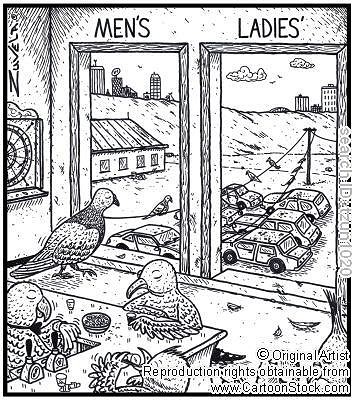Beyond Tiki, Bilge, and Test / Bilge / I'm Just Glad That Cows Can't Fly
Post #521192 by The Gnomon on Wed, Mar 31, 2010 11:45 AM
|
TG
The Gnomon
Posted
posted
on
Wed, Mar 31, 2010 11:45 AM
Apparently, all of the real health hazards associated with pigeon poop is after it has dried. It is susceptible to fungi that can cause disease in humans once it has dried and become airborne. Here is part of an article posted on nyc.gov (as if NYC had pigeon problems) regarding the possible ailments. === Pigeons are common to New York City. They often make nests in buildings and rapidly reproduce. Breeding occurs throughout the year, usually taking place between March and July. During these months, the DOHMH often receives questions about possible health risks associated with cleaning pigeon droppings. Contact with pigeon droppings may pose a small health risk. Three human diseases are known to be associated with pigeon droppings: histoplasmosis, cryptococcosis, and psittacosis. Histoplasmosis Symptoms of histoplasmosis begin to appear about 10 days after initial infection and include fatigue, fever, and chest pains. Most people, however, do not show any symptoms. Those with compromised immune systems such as cancer patients or people living with HIV/AIDS are generally more at risk of developing histoplasmosis. The disease cannot be transmitted from person to person. Cryptococcosis Psittacosis In humans, this bacterial disease is characterized by: fatigue, fever, headache, rash, chills, and sometimes pneumonia. Symptoms develop about 10 days after exposure. Psittacosis can be treated with a common antibiotic. Since 1996, fewer than 50 confirmed cases were reported in the United States annually. In New York City, psittacosis is very rare with less than one human case identified each year. According to the CDC, about 70% of infected people had contact with infected pet birds. Those at greatest risk include bird owners, pet shop employees, veterinarians, and people with compromised immune systems. No person-to-person cases have ever been reported. ===
[ Edited by: The Gnomon 2010-03-31 11:59 ] |

